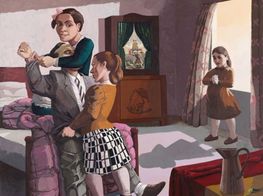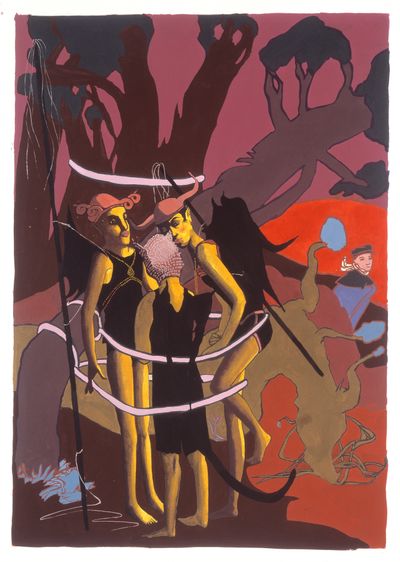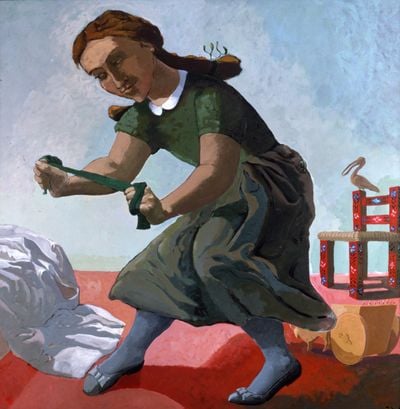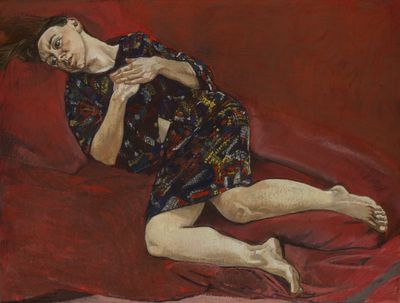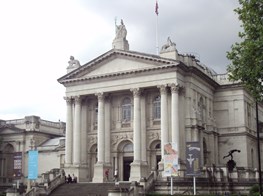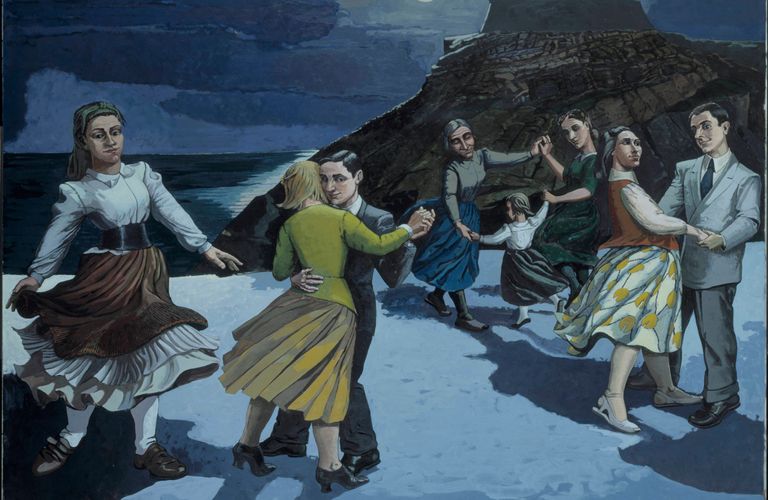
Born in Lisbon, and since the 1970s based in London, Paula Rego is known for her fearless, excoriating paintings depicting the vulnerabilities of human experience.
The legendary artist is soon to receive her largest retrospective to date, with seven decades of work on display at London's Tate Britain (7 July–24 October 2021)—Rego's first institutional solo exhibition in her hometown since 2004.
Often drawing on her own life experiences, Rego's enveloping paintings unabashedly tackle political themes such as patriarchal violence, misogyny, social inequality, mental health, illness, and loss of life. The latter, personally experienced by Rego when her husband, artist Victor Willing, died following a painful battle with multiple sclerosis in 1988.
With an auction record of over £1.1 million, for a painting titled The Cadet and his Sister (1988), which sold at Sotheby's London in 2015, Rego is among the most expensive living female artists, alongside Jenny Saville, Yayoi Kusama, and Marlene Dumas. Tensely staging the moment a sibling prepares the other for battle, the work will return to public view in Tate's exhibition.
Rego's ouevre is also known for referencing mythological and religious allegory, in addition to reenvisioning multiple histories of Western art—from the Renaissance and Old Masters to modernism.
For instance, The Dance (1988), from Tate's permanent collection, depicts a group of formal figures intimately slow dancing under a moonlit sky. A singular figure—who we can presume to be Rego herself—is dancing alone. The hypnotising painting is a clear homage to Matisse's iconic fauvist masterpiece, Dance, from 1909.
Describing the work in an interview, Elena Crippa, curator of Tate's exhibition, said 'What we see in The Dance are different moments in the life of a woman. In the background we see three women dancing; a child, a mother and a grandmother—speaking to the cycle of life,' adding '[we also] have a woman standing on her own. It's a picture about mourning, about Rego losing her husband, having the need and finding the strength to proceed in her life and career.'
Rego tends to play with the scale of figures she paints—men and women appear purposely small or large—drawing attention to the way size often elicits and establishes hierarchy across culture and society. This device is also utilised in standout works such as The Little Murderess (1987) and The Artist in Her Studio (1993).
Tate's show follows a major, critically acclaimed touring exhibition, Paula Rego: Obedience and Defiance, which premiered at MK Gallery, Milton Keynes, before travelling to Scottish National Gallery of Modern Art, Edinburgh and Irish Museum of Modern Art, Dublin (2019–21).
While Rego's unique works are thought to reach up to $6 million on the private market, the artist is also known for her long-standing creation of etchings and prints, available at more entry-level price points from London's Cristea Roberts. Nursery Rhymes (1989), a series in which Rego 'explores the strangeness and cruelty of traditional British children's songs' is included amongst the over 100 collages, paintings, pastels, drawings and etchings on view.
In October 2020, Rego left longstanding dealers Marlborough, for stalwart gallerist Victoria Miro. Announcing the collaboration, Miro remarked 'she is a fearless artist who paints life and the world head-on. Her work resonates today more powerfully than ever and I am excited to bring it to new audiences.' —[O]
Main image: Paula Rego, The Dance (1988). Tate © Paula Rego.

